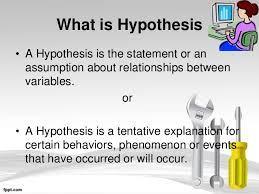We are quite surprised by the lack of drive from governments and health authorities and the nonchalance of the population following the outbreak of the Coronavirus in China.

Our hypothesis is that a lack of thinking skills among governments, health institutions, and the population has seriously contributed to the spread of the Coronavirus.
We will substantiate the hypothesis on the basis of a number of concepts that we previously examined in the Thinkibility blog
In earlier posts, we discussed the contribution of a lack of conceptual thinking skills and the focus on available information instead of relevant information. In this post, we will show how daily thinking habits have led us to blunder into a disaster. Some people will call the opposite of Daily Thinking ¨counter-intuitive¨.
While in January everyone could already see how profoundly life was being disrupted in China, officials denied the seriousness of the situation. How on earth could that have happened? To what extent is mechanistic and linear thinking and a lack of basic insight into probability, statistics, and non-linear curves an underlying cause of the rapid spread of the Coronavirus?
In those weeks before the major outbreak in Europe, there was still room to stock up on protective equipment, to scale up the laboratories, to expand the purchase and production of test materials, to prepare for the collection of serum with antibodies from cured patients. Only, it didn’t happen.
Outdated thinking
Our daily thinking – the way we think in normal life – is outdated. It is based on simple Newtonian thinking, dating back to the 1700s. We haven´t yet incorporated in our daily thinking habits new approaches that originate from developments in mathematics and in physics, and later in ecological systems. In our daily life, if we do not make a conscious effort, our approach to thinking is still in the Middle Ages, even if we are highly educated. Our daily thinking is flawed when confronted with complex problems.
We are inclined to see everywhere simple linear cause-effect relationships everywhere where they are not. We confuse accidental correlation with causation. Most of us miss a basic insight into the applicability and pitfalls of statistical approaches.
Mathematical illiteracy everywhere

Have you ever seen this formula of an exponential function in the media?
Apparently, the newspapers assume that people do not understand this language, or is it the journalists themselves?
The phenomenon of Exponential Growth is ao. for in computer networks, biology, physics, mechanics economics, and finance. Indeed, it seems that a lack of understanding of exponential growth is a major cause of insurmountable debt and Ponzi debacles.
Many people think that driving a car twice as fast requires twice as much motor power. However, the air resistance increases with the square of the speed, with the result that the motor power required to propel a vehicle increases with the third power of the speed. a model study found that if one in three offices is closed, three-quarters of infections can be saved.
Most relations in science are not linear. If a species of bacteria doubles every ten minutes, starting out with only one bacterium, how many bacteria would be present after one hour?
Linear versus Exponential Growth
Since most people are not familiar with the phenomenon of exponential growth, they do not recognize its onset and confuse the development of the variables as linear. As a result, a lot of time is wasted before the true nature of the developments is fully realized. Valuable time is then already lost.

Since most people are not familiar with the phenomenon of exponential growth, they do not recognize its onset and confuse the development of the variables as linear. As a result, a lot of time is wasted before the true nature of the developments is fully realized. Valuable time is then already lost. At this point, the healthcare system and daily life will be disrupted.
We believe it is one of the main reasons that the response of governments, health authorities, and residents to the virus outbreak has been lax and slow, with tragic consequences.
Correlation does not imply causation
Correlation means that two events occur together. But that does not mean that they are necessarily related to a cause-effect relationship. The relation between the two phenomena could be purely coincidental. Look at the images below, what do you conclude?
Our absurd conclusion might be that all sunburnt people must be murderers.
In the above examples, a third factor is involved that causes both phenomena, which explains the correlation (temperature resp. hot weather).
We found an example regarding the Covid-19 virus, where a wrong relationship may be confused with the cause.

Sometimes there is a link between two variables, but the direction is reversed. F.i stomach acid kills bacteria vs. a bacterium that has an affinity for acidic environments, thereby causes stomach ulcers. Maternity fever was not cured by doctors but rather caused by them, because they were not used to wash their hands after an autopsy.
Another possibility is that the interaction is not linear, but interactive, mutual, or circular. Unprotected nursing staff in homes for the elderly infect patients, who in turn infect other caregivers.
As we have pointed out in earlier posts, due to unfinished concept scouting and the relationships between them as well as a lack of information (and a plan to obtain it), we can safely assume that most of the correlations found do not have any causation.
For example, the disease mainly affects the elderly was based on early observations in China and in Italy. The circumstances under which the elderly live in China and Italy (small homes, often with families, higher than the average age, medical condition) differ substantially from those in Northern Europe and the United States.
No clue of Statistics
Most people have not slightest est insights into the pitfalls of statistics and probability. It is also referred to by the term Ecological Fallacy. At universities, it is a major stumbling block for most students, if they already have to take the course. This does not include journalists, legal scientists, and economists.
Below are a few of the pitfalls that are completely missed by the press when they present figures, and about they are not able to interpret the data critically.

In general, it can be said that one only resorts to statistics if one does not see an opportunity to formulate a mathematical relationship between one variable and another. Statistics are associated with great uncertainties. It is all about the Probability of how likely an event is to occur or how likely it is that a proposition is true. Lots of data is needed to prove a relationship with sufficient probability. But which data and which relations? And then, it’s still about averages.
The concept of Average as was developed in astronomy and later in physics was wrongly applied to groups of people. This became the foundation for bureaucracies, and then it slowly made its way into the rest of social science, and this thinking continues unabated today—in our education systems with GPAs and test scores, in our companies with performance reviews and hiring processes, in our healthcare system with the way we treat patients, and on and on. It is also referred to by the term Ecological Inference Fallacy.
Then there is the distinction that in the press is rarely made between probability and conditional probability. When we hear about a mortality rate of 3.4%, what we are actually being told is that of all the people who have contracted COVID-19, 3.4% of them have died (past tense). It does not mean that in a room of 100 people with COVID, 3 people will die. When it comes to a prediction, we have to consider several probabilities.

- The probability of being under 65-years-old given dying from COVID.
- The (unconditional) probability of dying from COVID.
- The (unconditional) probability of being under 65.
Politicians, journalists, and parts of the scientific community have not been trained to understand the statistics of the Coronavirus. Policy-based on statistics and unverified and insufficient data is doomed to failure. It is blind sailing in the mist with a false pointing compass.
To Conclude

In the Coronacrisis, the lack of drive is due to flawed thinking. Unfortunately, there is no reason at all to believe that the same flaws of linear thinking and statistical approaches do not play a role in developing measures to get out of the lockdown. Because of a thinking habit, not changed since the 17th century.
Next post
So far, we have argued that the blundering into the Covid-19 disaster is due to a defect in conceptual thinking, neglecting the crucial role of information in taking decisions under great uncertainty, an inclination to linear thinking, and a lack of fundamental insight in statistical reasoning. But there is more.
To what extent are more subsystems involved than just the health care system in tackling the crisis? How are they built? What data they use? Is it taken into account that the spread of the virus, the measures that are taken by the government, and the reactions of the citizens form a complex dynamic system?
Related posts
- Daily Thinking. The most dominant feature of Daily Thinking is that it happens in a logic bubble and that no conscious effort is made to escape from that. The logic bubble – or the standard thinking pattern – is the thinking space that defines the width and depth of the thinking, its time frame, what is Left Out and what biases color the construction of reality. Daily Thinking is fierce controlled by social influences and the Main Stream Media.
- Left Out. One can safely assume that any information you are presented with has some relevant information “Left Out”.The originator’s perspective, the logic bubble in which he perceives the world, and how the information is applied are some possible reasons for the missing information. Also, we may unconsciously miss the presented information because it doesn’t fit in our logic bubble or it contradicts our value system (we are biased).
- The Average, a Totally Misused Concept. The concept of Average as was developed in astronomy and later in physics was wrongly applied to groups of people. That is methodologically incorrect, as Peter Molenaar discovered in his study of ergodicity. Thus, ideas about disease progression are based on a wrong assumption.
- Cultural Filters. Concepts are like logic bubbles or thinking patterns. They define what you perceive and what alternatives, possibilities, and choices you can come up with. Translating foreign concepts in the native language could destroy the original meaning. Using original foreign concepts may reveal new insights.
- World’s Most Interesting Reversals. Reversals are applied to create opportunities to escape from patterns. Carefully designed Reversals are excellent thinking strategies in attempting alternative explanations for phenomenons in medical science, sociology, and psychology.
Other sources
- Aerosols. Aerosols could be a missing link in explaining how the Coronavirus spreads.
- Coronavirus and Probability. The media must learn how to report statistics.


